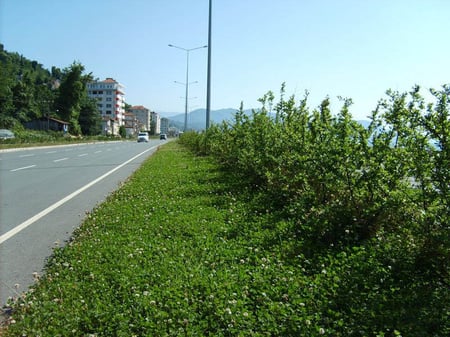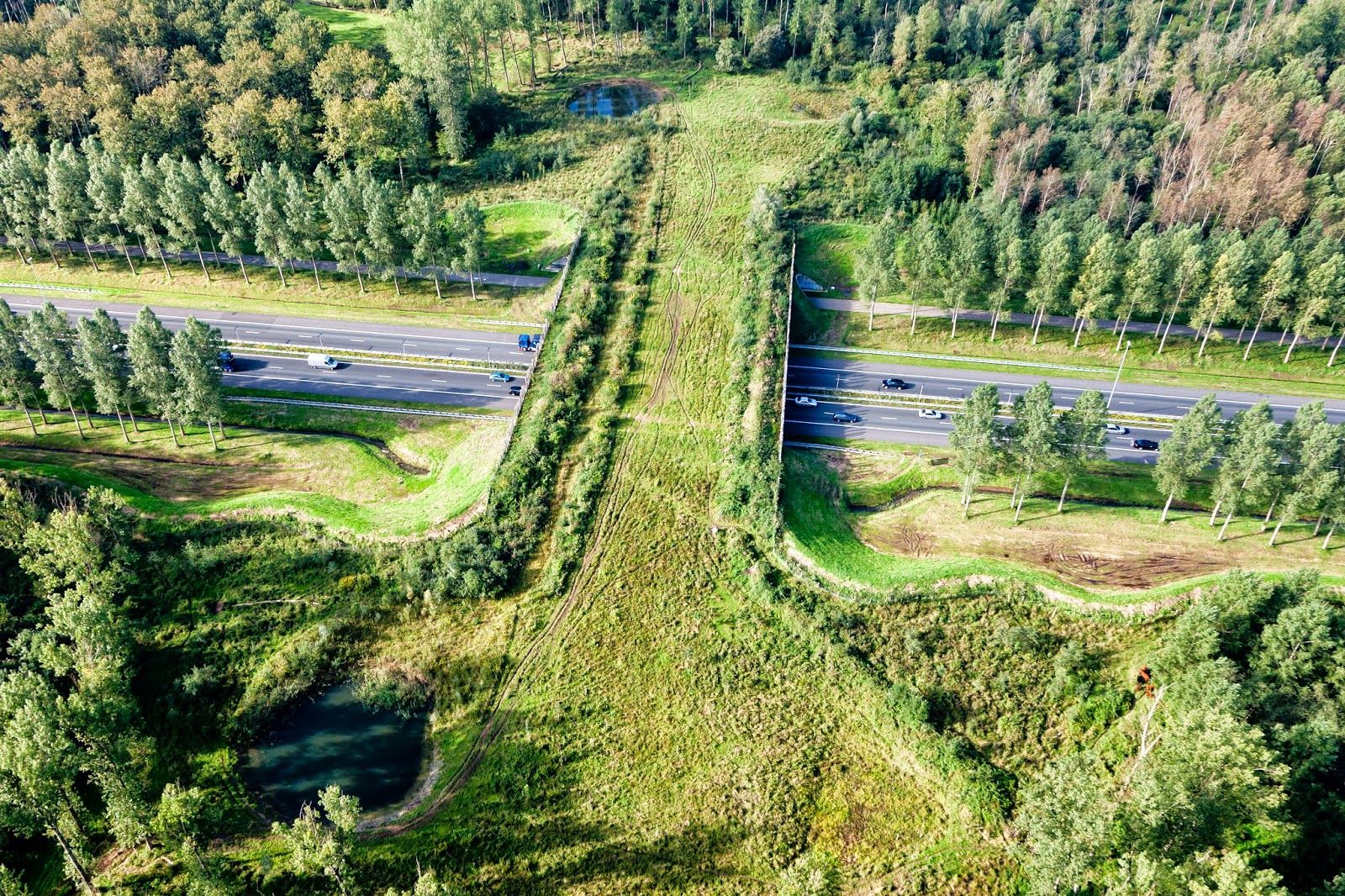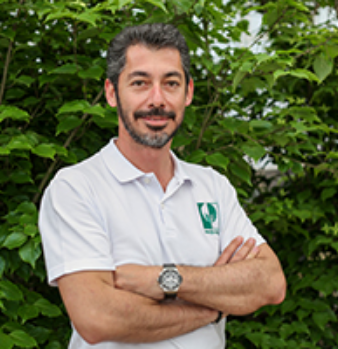Roads, highways and freeways are all a big part of our lives, with most of us spending at least 30 minutes every morning and evening on them getting to and from our jobs. So why not make them look nice? Highway landscaping and road landscaping bring more to the table than just aesthetics though. It can actively benefit the environment by absorbing carbon emissions and reducing noise pollution while also benefiting our mental health with the greenery and attracting tourism with the beautiful native plants each of our nations has to display.
So let’s get into it./p>
What is Road Landscaping?
Road landscaping is the process of planting trees and shrubs along road verges, traffic circles and medians, as well as installing hardscaping features such as streetlights, road signs and sometimes even water features and art installations. Since road construction often involves disrupting woodlands and wildlife, as mountainous areas provide more physical constraints, highway landscaping is essential to combat the negative effects urban development can have on the environment.
Why is Roadside Landscaping Important?
Planting trees and shrubs or hydroseeding on highway verges helps absorb water and slow the runoff which reduces soil erosion and controls flooding. This in turn helps keep our water resources clean of sediment and toxins. They also block snow from being blown onto traffic in winter.

Planting beautiful and ideally native plants next to roadsides also shows visitors what the landscape has to offer and can even be a tourist attraction unto itself. What’s more, well-designed roadside landscaping can represent a healthy economy.
But the benefits of roadside landscaping don’t stop there. Dense foliage actively reduces carbon emissions and noise pollution from passing traffic, as well as removing toxins and particles from the air. It even provides a natural habitat for local wildlife that may have been disturbed by the highway construction.
Landscaping can even increase driver safety, from streetlights to shrubs. Plants in the median serve to decrease the glare from traffic on the opposite side of the road, along with dense shrubs in the East and West where the sun is lower, which increases driver safety due to the reduced number of accidents due to visibility issues.
Landscape design is a crucial part of urban planning and development, especially when considering roads. The depth of the road and surrounding verges can greatly impact the way noise travels as well as the way water flows and soil erodes so landscape designers should be involved in the construction process.
What Can You Plant Along Roadsides?
Native plants are the most ideal for planting along roadsides for a number of reasons. The first being that they are the most prepared for the local landscape so require much less ground preparation, pesticide use and general maintenance. The second reason is that they are used to the microclimate so they are generally drought-resistant as they are used to the levels of rainfall so do not require additional irrigation.
.jpg?width=1200&name=gebze-orhangazi-otoyolu-6-(1).jpg)
Another consideration for planting trees and shrubs is the direction of sunlight. As the sun rises in the East, the sun is hottest when in the south so trees should have dense foliage to shade the roads and prevent them from heating too much, likewise, ornamental plants can feature on northern sides as the sun isn’t so strong in that direction. This should be considered along with the width of the road itself to keep the landscape in proportion.
Roadside plants will generally be exposed to a great deal of sunlight, however, and any harsh weather normal for the microclimate and will not likely receive much maintenance so will have to be relatively hardy - this is why we often see Nerium oleander and Rosemary in the medians of Mediterranean and Middle Eastern highways as their flowers are both beautiful and the plants are hardy enough to withstand high temperatures and little rainfall.
Plant variety is very important to please your drivers and tourists visually, but also to give roads an identity, making navigation easier. On highways, however, trees and shrubs can be planted in bulk and changed every few kilometers as they will be viewed at a higher speed that roads in suburban areas which should be more varied.
What Hardscaping Features are Involved in Road Landscaping?
While aesthetics are clearly important, road safety is of the utmost importance when designing a road landscape. That’s why streetlights need to be evenly spaced and the correct height to light up the highways without having shrubs cause disturbing shadows on the road itself, and signage needs to be helpfully positioned, without being covered by trees. If trees are planted around signs, then they need to be well maintained for the ease of use of drivers.
Traffic circles in France in particular are fantastic for celebrating local culture and art, but why let them have all the fun? Traffic circles are perfect for water fountains and sculptures to add attraction to your landscape and give tourists something to look at as they pass by.
What are Green Bridges?
Green bridges are a clever way of allowing animals to cross highways and busy roads. In areas of woodland where roads pass through, wildlife can be disturbed as much as plant life, so to allow for the safe passage of animals, bridges covered in grasses, shrubs and trees can be constructed, from one side of woodland to another.

Conclusion
At Karaoglu Landscaping we have three decades of experience in landscape design, development and maintenance, including highways and roads. You can see our previous work including hydroseeding with specialized equipment in our gallery page here, or check out our other blogs here.
![karaoglu-web-footer[7].webp](https://blog.karaoglu.com.tr/hubfs/karaoglu-web-footer%5B7%5D.webp.png)
